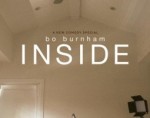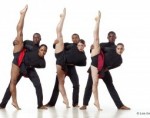COVID-19 and Dance: Resources to Keep Us Moving
by Kat J. Sullivan
This article will continue to be updated as new resources become available. Last updated: April 24, 2020.
It is not hyperbolic to say that everyone, everywhere, is being affected by the pandemic in some way. However, reporting has been limited on the ways in which this public health crisis, and the subsequent economic and social fallout, affects art-making communities such as dance. While dance is no stranger to the technological age, many of us find in-person community gatherings fundamental to the creation and sharing of our work.
If you are an artist in need of aid, if you are looking for more information, or if you are someone in a relatively stable position wanting to help, I’ve compiled a list of resources below for you to consider.
How is this affecting the dance community?
Several articles have been published detailing the experience of dancers and performing artists during the quarantine:
Dancers return to rehearsals: As Czechia begins to ease its quarantine prohibitions, in-person rehearsals resume for dancers of the Czech National Ballet in Prague, albeit with some restrictions remaining.
How dancers cope when they can’t dance: They improvise: This Washington Post article muses on what wisdom dancers offer us during this time and discusses the current predicament with modern and contemporary movers.
Dancers still need daily class: The New York Times profiles several dancers from both the American Ballet Theater and New York City Ballet on how they’re adapting company class for and from home.
Made for Screen: Opine Dance Film Festival: thINKingDANCE has published several articles in the last few weeks detailing the experiences of Philly dancers during the COVID-19 pandemic. Here, writer Kalila Kingsford Smith interviews Britt Whitmoyer Fishel on how the crisis has affected the premiere of her screendance festival in March. Find more interviews here.
When Will We Embrace Again?: tD has also published opinion pieces from several writers on their thoughts in the wake of social restrictions and isolation requirements. Here, dancer and anthropologist Carolyn Merritt laments the loss of in-person Argentine tango gatherings (“milongas”) and wonders if things will ever be the same.
How coronavirus impacts dance in the United States: Dance Magazine writes about how the spread of COVID-19 has affected dance companies across the country and the ways that many are trying to get, well, creative. Project Trans(m)it, an online collaboration between international artists (a few of which are Philly-based), is featured. The magazine has also compiled a list of resources that artists and organizations may reference “in preparation for any financial fallout.”
In Italy, ‘Io Resto a Casa,’ But Still I Dance: A New York Times article covers how Italian dancers are managing the quarantine. The four interviewed dancers, each located in a different Italian city, are all affiliated with ballet. I wonder how dancers whose work isn’t as easily codified, and thus less sharable and monetize-able, are managing the quarantine. Readers without a paying subscription can still read coronavirus-related pieces at the Times website for free by registering for an account with their email.
Coming Together—Figuratively, Not Literally—for Dance: Many dance teachers are moving their classes online. tD writer Kristi Yeung reported on this and has included a list of recurring online dance classes should you want to join in.
No dancing around COVID-19, the Philadelphia Arts Community seeks to persevere: Lewis J. Whittington (for The Dance Journal) discusses the pandemic, quarantine, and effects on the local dance economy. In addition, Steven Weisz considers why stimulus checks will be ineffective in supporting the dance gig economy in this editorial.
How We Use Our Bodies to Navigate a Pandemic: In a New York Times op ed, dance critic Gia Kourlas muses on how the coronavirus is increasing our bodily awareness, a skill dancers have long been honing.
In the Middle of a Pandemic, Dancers Re-frame What It Means to Stay in Motion: Courtney Colón considers how we maintain relationships during a pandemic, both with others and with ourselves, for The Dance Journal.
Additionally, when reaching out to the dance community for resources, I received many emails like this one from a local studio owner:
This is a disaster for us; not only can we not dance together, all performances, events, and classes are canceled. Never mind how this affects dancers, adjunct professors, musicians, actors, lighting designers, and everybody working in theaters. I will probably have to close the studio; I cannot afford months of rent without any income. I already opened during the off-season, and it was very difficult to pay the studio overhead. These new conditions will just make it impossible to sustain for me. I hope local funders like Pew and William Penn consider helping artists like me trying to bring quality programs to the city.
I need help. Where can I find it?
This list includes financial, emotional, and creative support options:
COVID-19 Financial Resources for the Philadelphia Dance Community: Managing Editor Mira Treatman is aggregating resources for Philadelphia artists who are in need of financial aid as a result of the pandemic. This will be continuously updated as new resources become available.
COVID-19 Freelance Artist Resource: This website is an aggregate of “resources, opportunities, and financial relief options available to artists of all disciplines,” not exclusive to dancers. The wide array includes both international and local resources.
Panel: Artists in a Time of Global Pandemic: This conversation was hosted by Howlround Theatre Commons (based out of Emerson College) and was live-streamed on March 16. The video recording is available online and includes ASL interpretation and captioning. The panel focuses on freelance artists and other cultural workers, as well as “shared resources (legal, advocacy, how to take your work virtual, finding emergency funding, and financial best practices in crisis) and building and grounding our national community.”
Philly Performance Artist Fund: A GoFundMe raising money for Philly-based artists who are under financial strain caused by the spread of COVID-19. The organizers have closed this fundraiser as of Wednesday, March 18 and are waiting to receive the funds from the platform, but list alternative and ongoing methods of donation (Venmo and Cashapp specifically) under “Updates” at the bottom of the page. Funds donated via either app will be dispersed to artists in need within 24 hours. In order to request funds, artists must fill out the accompanying survey, which can be found here.
Philadelphia Writers Emergency Fund: This fundraising campaign serves freelance writers and independent booksellers and presses who have lost income due to the pandemic. It is hosted by Blue Stoop, a Philly organization supporting writers with events and public classes, and the 215 Festival, a yearly literary celebration in Philly (on hiatus, but due to return in 2021). If you are interested in applying for funding, the application can be found here.
NYC Low-Income Artist/Freelancer Relief Fund: A GoFundMe raising money for New York City-based artists who are under financial strain caused by the spread of COVID-19. In order to receive funds, artists must fill out a survey (although as of Wednesday, March 18, the survey is paused while the organizers attend to the 500-some artists who filled it out).
Dance/NYC Information and Resources: New York City’s comprehensive hub for dance has compiled useful information for NYC-based dancers, including a list of resources and a coronavirus impact survey.
Gibney Dance COVID-19 Resource List: Gibney is a NYC-based dance organization but much of their resource list is applicable to the national dance community. Their self-care and mental health resources distinguish this list from others I’ve come across.
The Social Distancing Festival: Hosted by artist Nick Green of Toronto, this is an online-only platform giving artists the opportunity to share work that has been cancelled or postponed due to contagion concerns. The festival accepts videos of any genre of art and boasts informality: anything from a clip of rehearsal through a live stream read-through. Submissions are accepted on a rolling basis. While not a source of financial support, this is a way to continue to make and share your art over the internet.
Sharing Philly: An adaptation of leveler, this community-sourced and -operated tool provides financial support to those in the freelance and service industries. The link to the Excel sheet where one can insert one's information or find how to give can be found here. If you are an artist outside of Philly, the leveler services anyone in the United States, and they intend to expand internationally.
SOLO BUT NOT ALONE Online Dance Festival: PhiladelphiaDANCE provides an opportunity to show work for those interested in creating something at home. Submit a video via the form linked above. New works will be highlighted each week, and each submission is randomly entered to win a small financial prize.
Unemployment Insurance for Freelancers & The Stimulus Package: Steven Weisz of The Dance Journal breaks down what the recently-passed stimulus package means for freelancing dancers, in addition to ways you might apply for unemployment insurance.
Dance/NYC Coronavirus Dance Relief Fund: Dance/NYC is collecting donations to disperse to the metropolitan NYC dance community through grants, to be awarded later in the year. Information on how to contribute to this fund can be found here. Please note that, at the time of publication, this fund is not accepting new applications, but will reopen for submissions on April 10, 2020 at 6pm EST.
Research and resources from See Chicago Dance: thINKingDANCE and See Chicago Dance have enjoyed a partnership since October 2019. Their website features this helpful and exhaustive list of financial, technological, and informational resources that dancers may utilize during the pandemic. Some are Chicago-specific, others are applicable nationwide.
How can I help?
At this point in the outbreak (as of Sunday, March 22), one of the most significant ways you can provide aid is to donate to any of the funds listed above to help fill in the financial hole that many dancers are facing as their performances and jobs are cancelled or postponed. A suggestion from local dance-centralizing website PhiladelphiaDANCE:
If you have tickets to a live theatre [or dance] event and shows have been cancelled due to the virus—please consider donating the money to the theatre [or artist] instead of asking for a refund. This is the kind of thing that kills arts organizations. Thousands of theatre [and dance] professionals’ jobs and health care are at stake.
You can also stay up to date on what dance offerings have been cancelled or postponed near you. In Philly, the PhiladelphiaDANCE calendar is the place to check. PhiladelphiaDANCE recommends reaching out to artists and presenters directly to see if a show is continuing as scheduled, though they appear to be updating their calendar of performances as best they can. If a show or class has been cancelled or postponed due to the virus, consider shouting out the artist(s) on your social media, or emailing your circle about why you were/are excited to see their work. Others around you may be able to donate or will look to support the artist(s) in future endeavors.
Individuals Look to Leverage Giving: tD writer Ellen Chenoweth discusses the benefits of giving to financially support others during this time. The essay includes examples of how artists are redistributing funds amongst themselves.
If financial support is not an option for you, there are still many ways you can help dancers as we all navigate the uncertainty. Keep up with what is (or, more likely, isn’t) happening in your local dance scene and consider sharing your thoughts in a survey:
COVID-19 Impact Survey for Philadelphia Theatre Organizations and Artists: One of tD’s local partners, Theatre Philadelphia, is hosting two surveys collecting information on the impact this outbreak is having on the theatre scene. One survey is directed at artists and the other at organizations. TP continuously updates this webpage with the results of both surveys as they receive more information. They also maintain a webpage with performance updates in the greater Philadelphia area; if you want to know if a theatre show has been postponed or cancelled, check here.
COVID-19 Arts Stories – The Human Dimension: This is a survey put together by the Campaign for a Creative Generation, a group working to “cultivate the creative capacities of the next generation.” The survey is open ended, allowing for artists and supporters of the arts to impart their individual story in their own words. Stories were published on this website on Friday, March 20, though information will continue to be collected beyond that date. Questions are in both English and Spanish / Las preguntas están en inglés y español.
Confinement Dance Photo Essay Series: Consider submitting a photo of your movement practice to tD! We will be compiling submissions into a series of essays starting April 30.
Artists—filling out surveys about your experience during this time will be crucial as we attempt to determine what the impact of the pandemic is on our community and, in the future, what sort of support we will specifically need.
If you are part of the Philly dance community, how are you being impacted or adapting? What other resources are you aware of that tD can amplify on our website? Comment below or write to us at info@thinkingdance.net.
Author’s note: If you have any questions about the COVID-19 pandemic itself, consult your local news source, as the landscape changes dramatically and quickly. In Philly, I have been tuning in to WHYY, our local NPR station. If you are ill and concerned about having contracted COVID-19, call your doctor to find out what your options are for testing. A helpful article outlining your testing options in the Philadelphia area can be found here.
By Kat J. Sullivan
March 23, 2020






.png)


